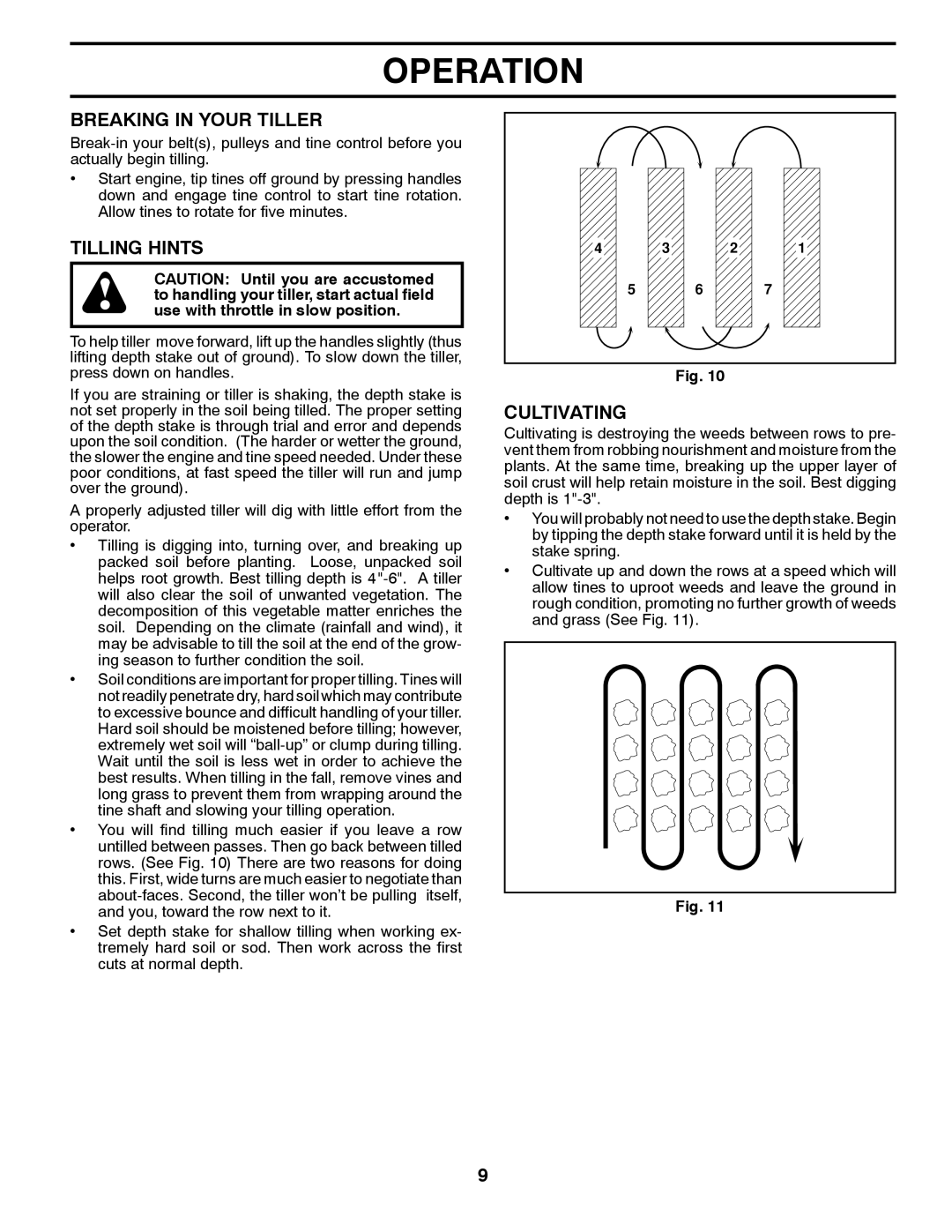433552, 96082001500, VF550 specifications
The Poulan VF550 is a robust and versatile lawn mower designed to cater to the needs of homeowners and professional landscapers alike. Known for its performance and durability, the VF550 is built to tackle various mowing tasks with ease and efficiency.One of the standout features of the Poulan VF550 is its powerful engine. Equipped with a reliable gas-powered engine, it delivers consistent performance, ensuring that even the toughest grass can be cut without straining the machine. The engine's design focuses on fuel efficiency, allowing users to maximize their mowing time without frequent refuels.
The VF550 features a wide cutting deck, typically around 21 inches, which allows for efficient mowing over larger areas. This broad cutting path reduces the number of passes needed to achieve a well-manicured lawn, saving both time and energy. The adjustable cutting height feature is another practical characteristic, allowing users to customize the grass length according to their preferences or the specific requirements of their lawn.
Another essential aspect of the Poulan VF550 is its innovative cutting technology. The mower is equipped with a precision cutting system that ensures a clean and even cut. This not only enhances the appearance of the lawn but also promotes healthier grass growth by minimizing damage to the blades of grass during mowing.
User comfort and ease of use are paramount in the design of the VF550. The mower features ergonomic handles that provide a comfortable grip, reducing fatigue during extended use. Additionally, its lightweight construction makes it easy to maneuver around obstacles, while its compact design allows for easy storage.
Maintenance is greatly simplified in the Poulan VF550. The easy-access engine compartment enables quick maintenance checks and tasks, such as oil changes and air filter replacements. This focus on user-friendliness ensures that the VF550 remains a practical tool for maintaining a beautiful lawn.
Overall, the Poulan VF550 combines reliability, performance, and convenience in one package. Its powerful engine, wide cutting deck, and advanced cutting technology make it an excellent choice for anyone looking to keep their lawn in pristine condition. With features designed for ease of use and low maintenance requirements, the VF550 stands out as a top-tier lawn mower in its class.

